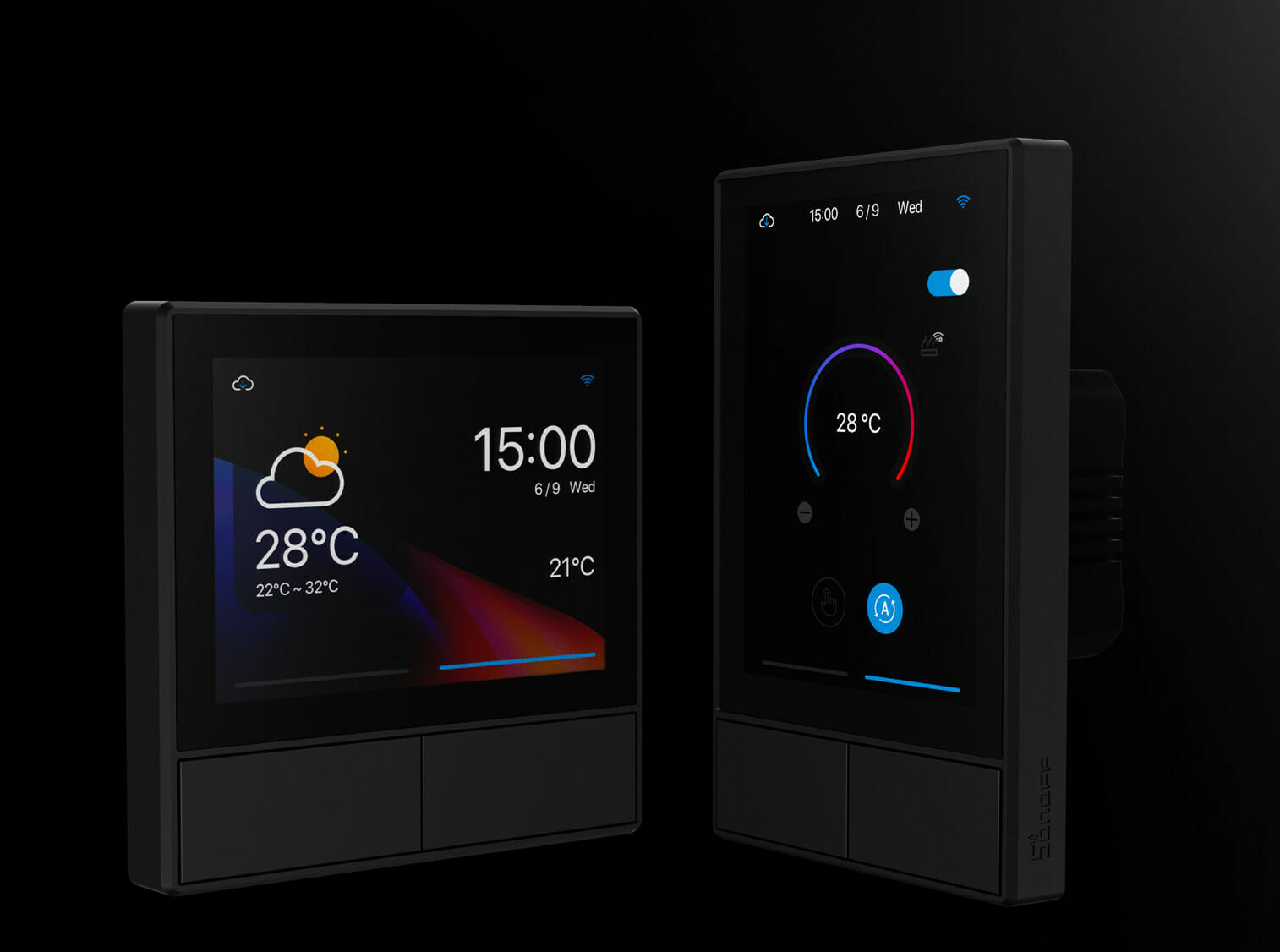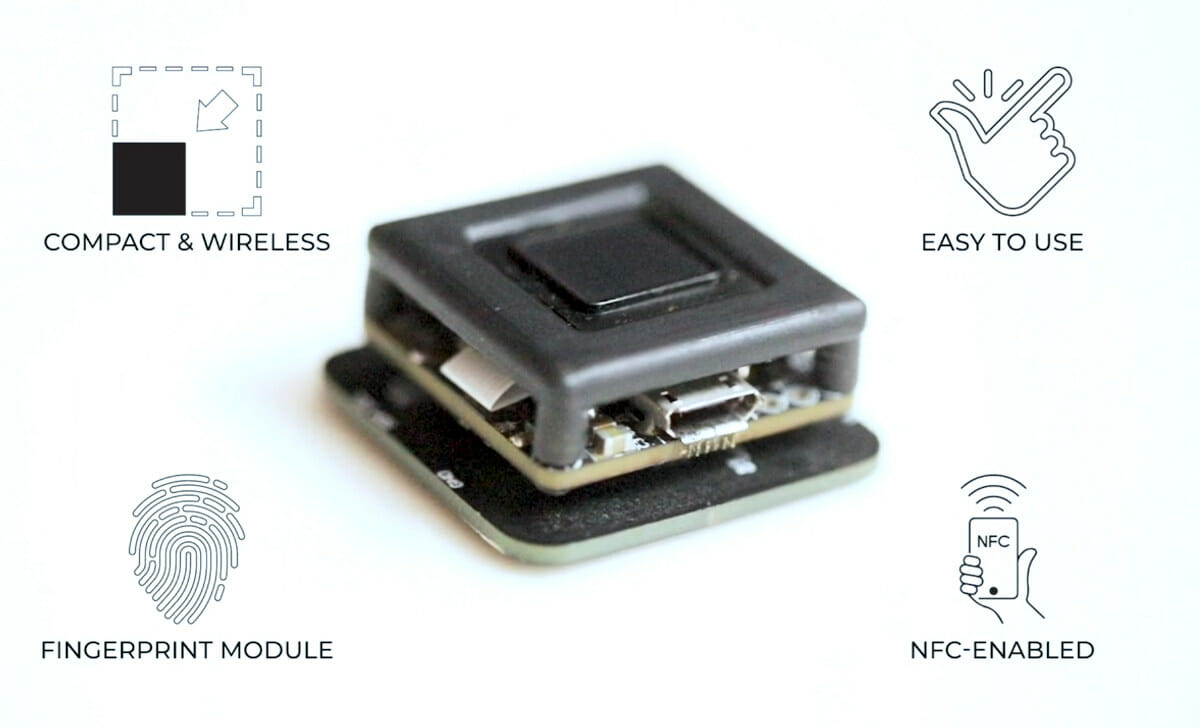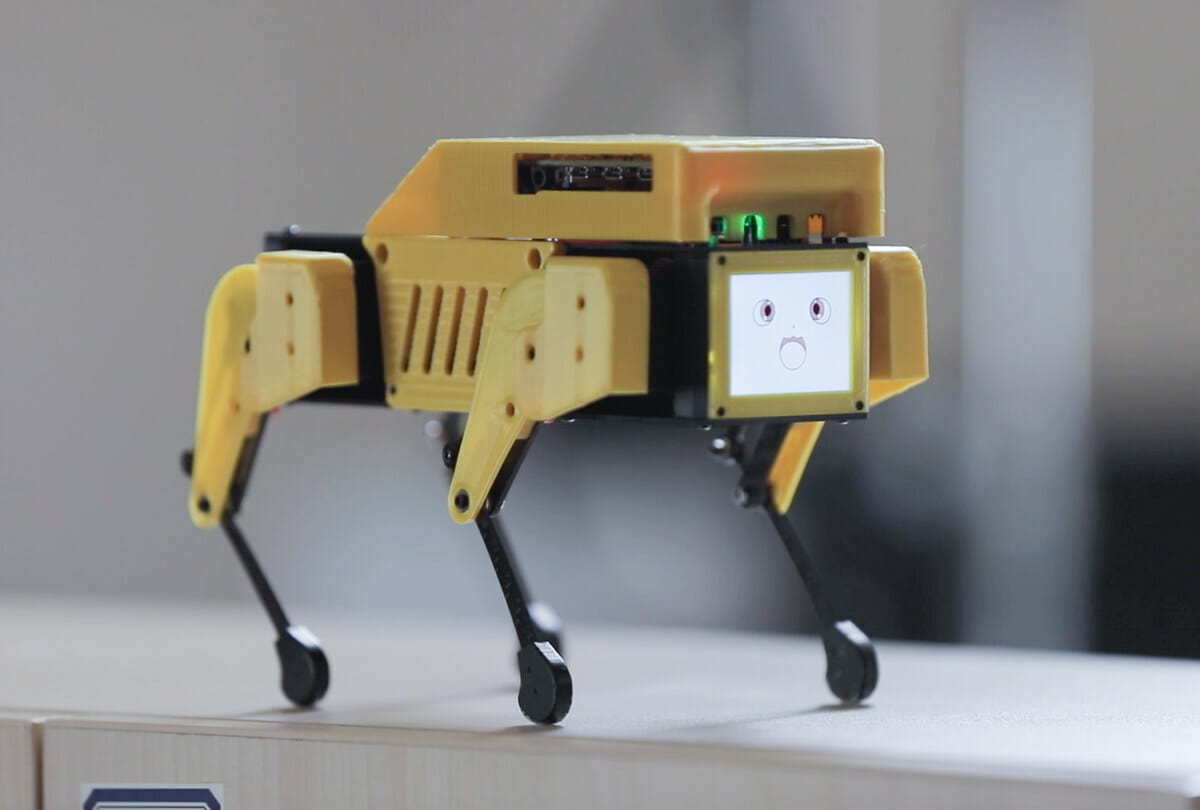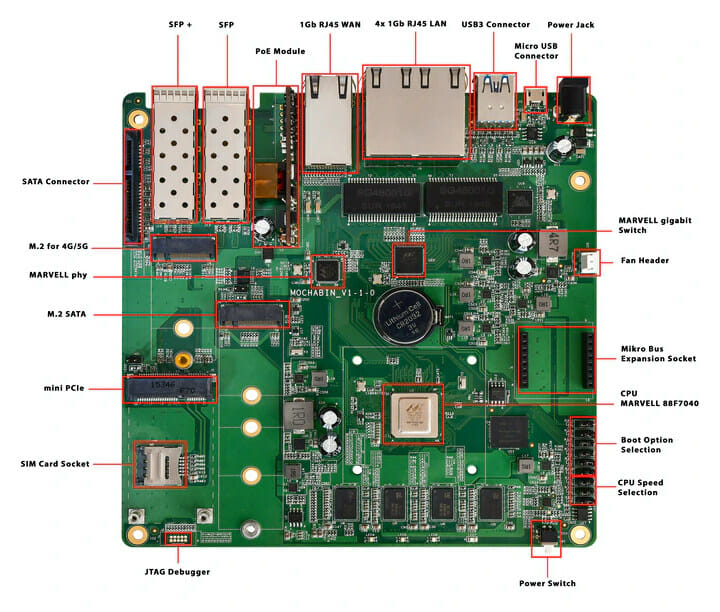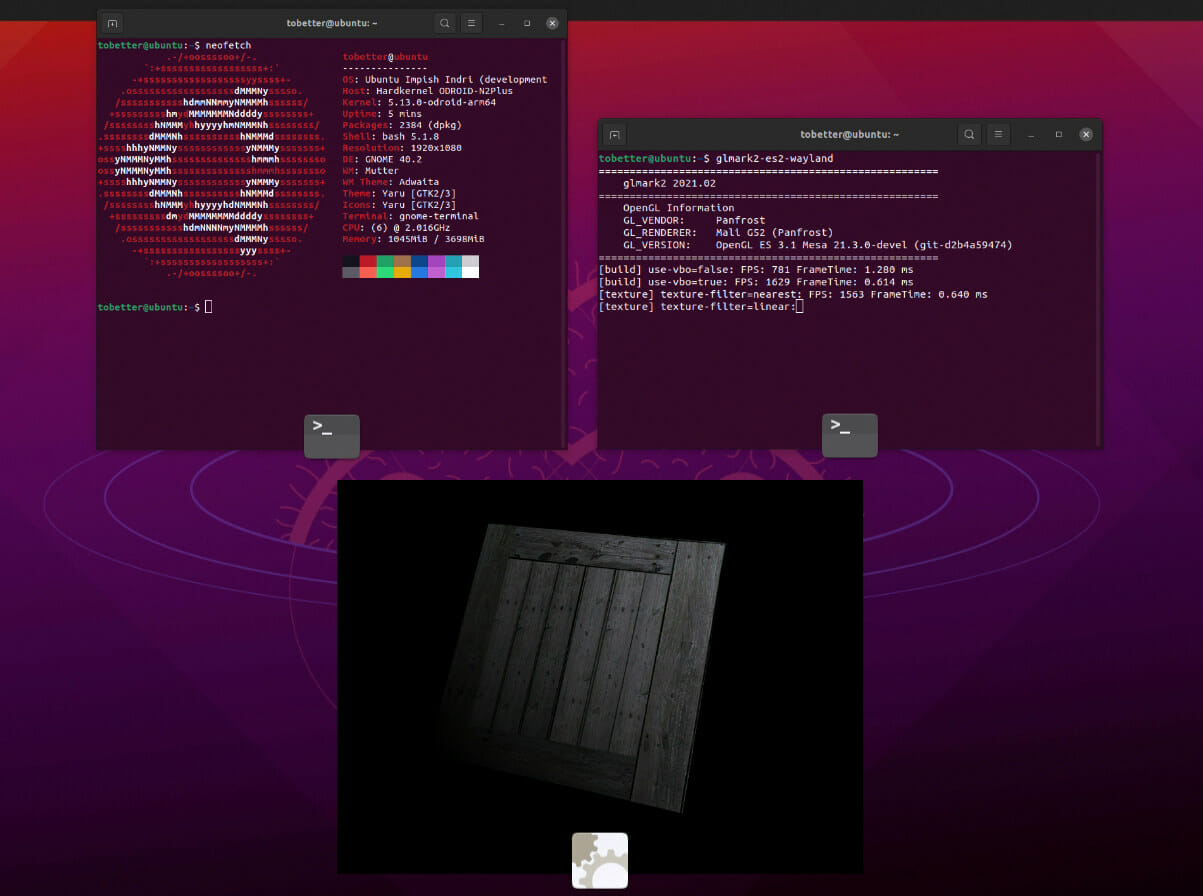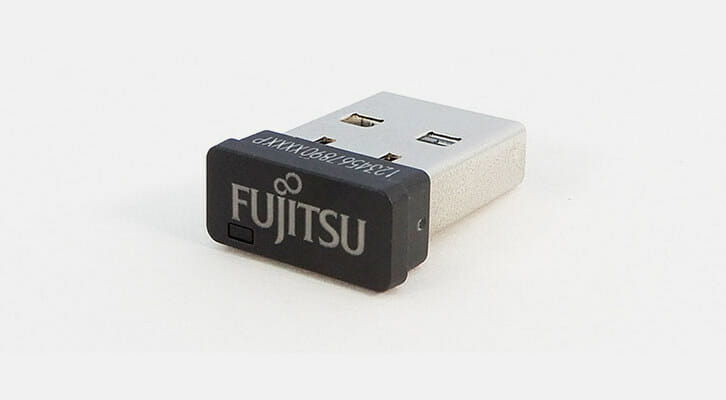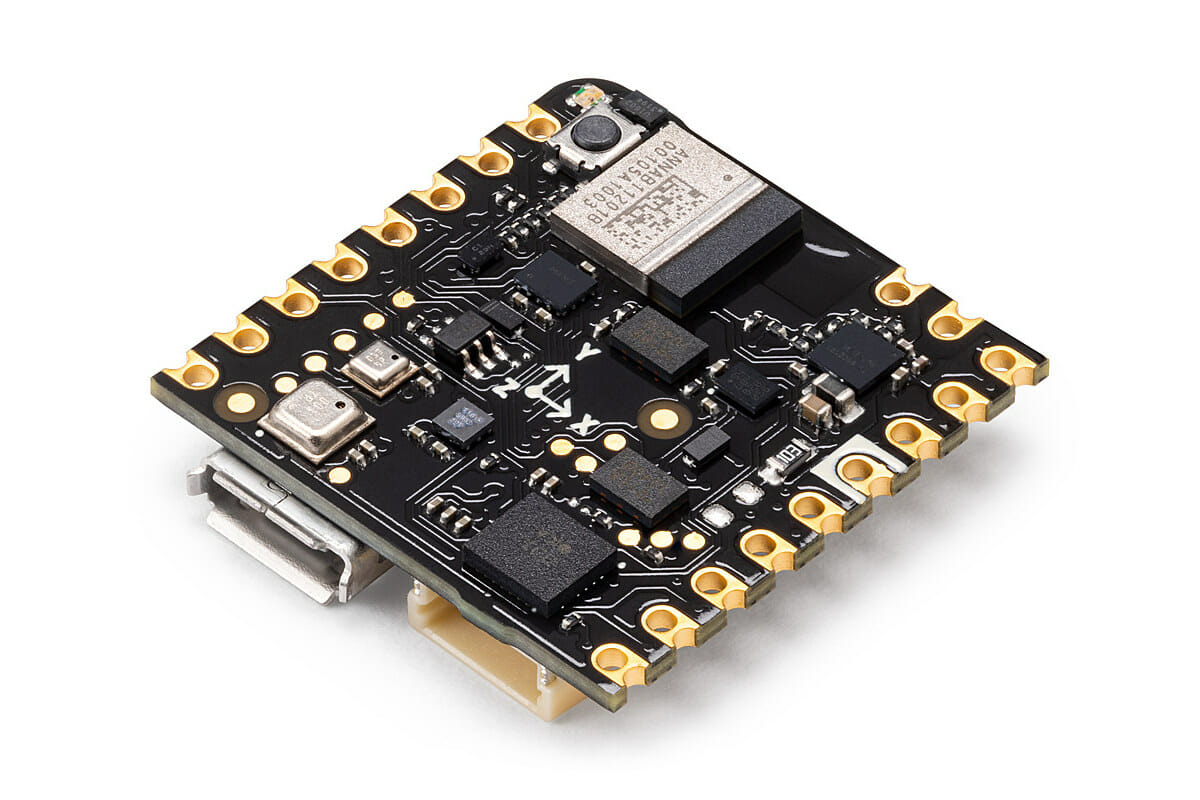You’ll soon be able to control all Sonoff smart switches, sockets, light bulbs, IP cameras, as well as Philips lighting solutions with the Sonoff NSPanel, a 3.5-inch HMI display supporting wall installation to US or EU standards. The ESP32 based touchscreen display integrates a dual-channel wall switch, supports Amazon Alexa, Google Home, or Yandex Alice voice assistants, and if you are not at home, you can still control your appliances with eWelink app for Android or iOS. Sonoff NSPanel specifications: WiSoC – Espressif ESP32-DOWD V3 dual-core Xtensa processor @ 160 MHz with 512KB RAM, 2.4 GHz 802.11n/g/n WiFi 4, and Bluetooth 4.2/5.x Display – 3.5-inch capacitive touchscreen display with 480×320 resolution Power Input – 100-240V @ 50/60Hz up to 4A Power Output – 100-240V @ 50/60Hz up to 2A per gang, or 4A in total LED Load 110V – 150W per gang, 300W total 220V – 300W per gang, 600W […]
Chhavi – An ESP32-based fingerprint sensor with optional NFC, battery (Crowdfunding)
Chhavi is a compact, wireless, touch-capacitive fingerprint sensor based on ESP32 WiFi and Bluetooth SoC that is offered with optional NFC connectivity and a battery. The Arduino programmable fingerprint sensor is equipped with Fingerprints‘ FPC BM-Lite fingerprint capacitive biometric sensor that’s much more compact and power-efficient than traditional optical fingerprint sensors. Chhavi specifications: SiP – ESP32-PICO-D4 system-in-package with ESP32 dual-core processor @ 240 MHz, 4 MB SPI flash Fingerprint sensor FPC BM-LITE Module with 99% accurate fingerprint sensing Sensor matrix: 160 x 160 pixels Number of pixels: 25,600 pixels Active sensing area: 8 x 8 mm Features – Automatic finger detection, one-to-one verification mode Durability – 10 million finger placements Connectivity 2.4 GHz 802.11 b/g/n Wi-Fi via ESP32 Bluetooth BLE 4.2/5.x via ESP32 Optional 13.56 MHz NFC via NXP PN7150 NFC I2C controller 3D antenna Display – FPC connector for display USB – 1x Micro USB port for power/charging, and […]
Mini Pupper – Raspberry Pi 4-based robot dog teaches ROS, SLAM, navigation, computer vision (Crowdfunding)
Mini Pupper is a Raspberry Pi 4 powered robot dog inspired by Stanford Pupper open-source quadruped robot, and designed in “light collaboration” with Nathan Kau, the original creator of Stanford Pupper. Just like the original design, MangDang’s Mini Pupper is open-source, based on Ubuntu and ROS (Robot Operating System), and designed for robotics education in schools, homeschool families, enthusiasts and others, with notably students being able to learn out to use ROS, SLAM, navigation, and OpenCV computer vision through online courses that will come with the robot. Mini Pupper key features and specifications: SBC – Raspberry Pi 4 Model B with 2GB RAM Storage – 2GB microSD card Display – 320×240 LCD for facial animation Camera – Support for OpenCV AI Kit Lite 12 DOF via MangDang’s custom servos Optional Lidar module for SLAM (Simultaneous localization and mapping) Battery – 800 mAh Charger – Input voltage – 100-240V AC 50/60Hz, […]
Sofabaton X1 – IR, WiFi & Bluetooth remote control supports over 500k devices (Crowdfunding)
The Sofabaton X1 remote control system aims to replace all your other remote controls in your house thanks to infrared, WiFi and Bluetooth connectivity implemented through the X1 Hub, plus an integrated 2-inch on the remote itself for configuration and device selection. The company claims that over 500,000 devices are supported including TVs, DVD & Blu-Ray players, set-top boxes, gaming consoles, etc…, and voice commands are also supported through Google Home and Amazon Alexa voice services. SofabatonX1 specifications: X1 Hub Connectivity 2.4 GHz 802.11b/g/n Wi-Fi 4 Bluetooth 5.0 LE & Bluetooth 3.0 Infrared – 10 kHz to 100 kHz Power Supply – 5V/2A via USB Type-C port Material – PMMA X1 Remote Connectivity – Not mentioned… Display – 2-inch display with clickable scroll wheel User input – D-Pad, Backlit volume, trick modes, 4x customizable buttons, etc… Battery – 1,050 mAh LiPo battery good for about 2 months on a charge […]
MochaBin-5G SBC offers 10GbE, WiFi 6, 5G for $159 and up (Crowdfunding)
Globalscale Technologies has a follow-up to their low-cost ESPRESSOBin SBC based on Marvell Armada 3700LP SoC. The MochaBin-5G SBC is powered by a Marvell Armada 7040 quad-core Cortex-A72 processor, and offers 10GbE networking for as little as $159, with as well as optional WiFi 6 and 5G connectivity. The single board computer is equipped with 16GB eMMC flash, up to 8GB DDR4, and plenty of high-speed interface with multiple Ethernet ports, USB 3.0 ports, M.2 socket for SATA and Cellular, and a mini PCIe for Wi-Fi and Bluetooth connectivity. MochaBin-5G specifications: SoC – Marvell Armada 7040 quad-core Corex-A72 processor @ up to 1.4GHz System Memory – 4GB or 8GB DDR4 (soldered down) Storage – 16GB eMMC flash, 4MB SPI NOR flash for bootloader, SATA connector, M.2 2280 socket for SATA III SSD Networking 1x 10GbE SFP+, 1x 1GbE SFP (via 88E1512 PHY) 4x Gigabit Ethernet RJ45 LAN ports via Topaz […]
ODROID-N2+ SBC gets Ubuntu 21.10, Chromium OS with Panfrost open-source GPU driver
Panfrost open-source driver for Arm Mali Bifrost and Midgard GPUs has come a long way, and Hardkernel’s ODROID-N2+ board now supports Ubuntu 21.10 and Chromium OS with 3D graphics acceleration through the Panfrost driver. As a reminder, ODROID-N2+ is a single board computer powered by an Amlogic S922X Rev.C processor clocked at 2.4GHz with an Arm Mali-G52 GPU, with up to 4GB RAM, and which comes with HDMI 2.0, Gigabit Ethernet, four USB 3.0 ports, plus a GPIO header. ODROID-N2+ with Ubuntu 21.10 + Panfrost Ubuntu 21.10 Impish Indiri is supposed to be released on October 14, 2021 together with Gnome 40, but Hardkernel released a development version as early as August, with Linux 5.14 and Panfrost GPU acceleration as you can see from the screenshot above. The Ubuntu 21.10 image for ODROID-N2+ and the earlier ODROID-N2 SBC cannot be found in the Wiki just yet, but should be there […]
Fujitsu introduces Wirepas Massive USB dongle for location tracking, IoT mesh networking
I was first introduced to Wirepas Massive mesh networking a few days ago when I covered Solidrun Solidsense N8 IoT Compact Wirepas Massive gateway comprised of an NXP i.MX 8M Nano processor running Linux and a module based on Nordic Semi nRF52832 wireless MCU handling Wirepas Massive through its 2.4 GHz radio. It turns out there’s an easy way to add the new mesh networking technology to existing gateways: USB dongles. Fujitsu has launched the FWM8BLZ09x Wirepas Massive USB dongle family, based on the more recent nRF52833 SoC, with Anchor, Tag, and Sink models. Fujitsu FWM8BLZ09x specifications: USB Dongle Types Anchor – FWM8BLZ09P Tag – FWM8BLZ09T Sink – FWM8BLZ09S Wireless MCU – Nordic Semi nRF52833-CJAA Cortex-M4 microcontroller @ 64 MHz with 8 KB RAM, 512 KB Flash, 2.4 GHz radio Connectivity Wirepas Massive mesh networking Transmit power – +8dBm max. Carrier frequency – 2,400MHz to 2,483.5MHz Modulation – GFSK Symbol rate […]
Nicla Sense ME – Arduino PRO meets Bosch SensorTech’s motion and environmental sensors
Arduino is going full steam ahead with its Arduino PRO family of boards for industrial applications. After the announcement of the Portenta H7 Lite board earlier this month, the company has now introduced the Arduino Nicla Sense ME designed in collaboration with Bosch Sensortec. The Nicla Sense ME (Motion & Environment) board comes with a range of Bosch Sensortec sensors notably a 9DoF smart motion sensor and a 4DoF environmental sensor with AI capabilities, and targets industrial IoT applications either for research projects, rapid prototyping, or commercial products. Arduino Nicla Sense ME specifications: MCU – Nordic Semi nRF52832 Cortex-M4 microcontroller @ 64 MHz with 512KB Flash, 64KB RAM, Bluetooth 4.2/5.0 LE connectivity (via U-blox ANNA B112 module) Storage – 2MB SPI flash for storage; 2MB QSPI dedicated for BHI260AP Sensors BHI260AP motion sensor system with integrated AI, “Fuser 2” 32-bit Synopsys DesignWare ARC EM4 core with RISC FPU BMM150 magnetometer […]


